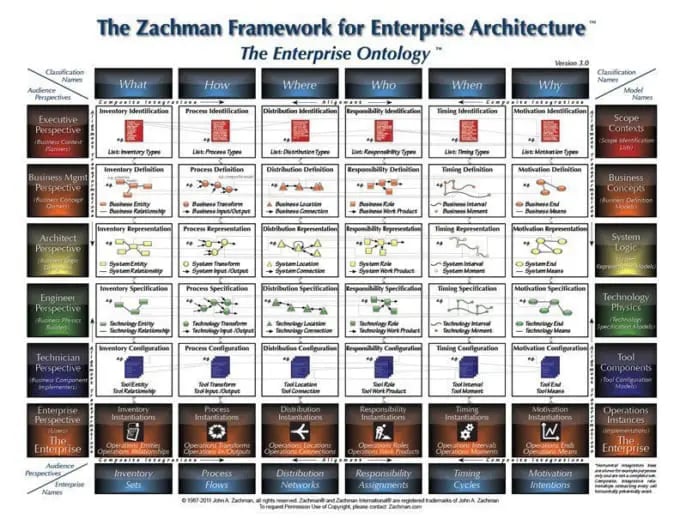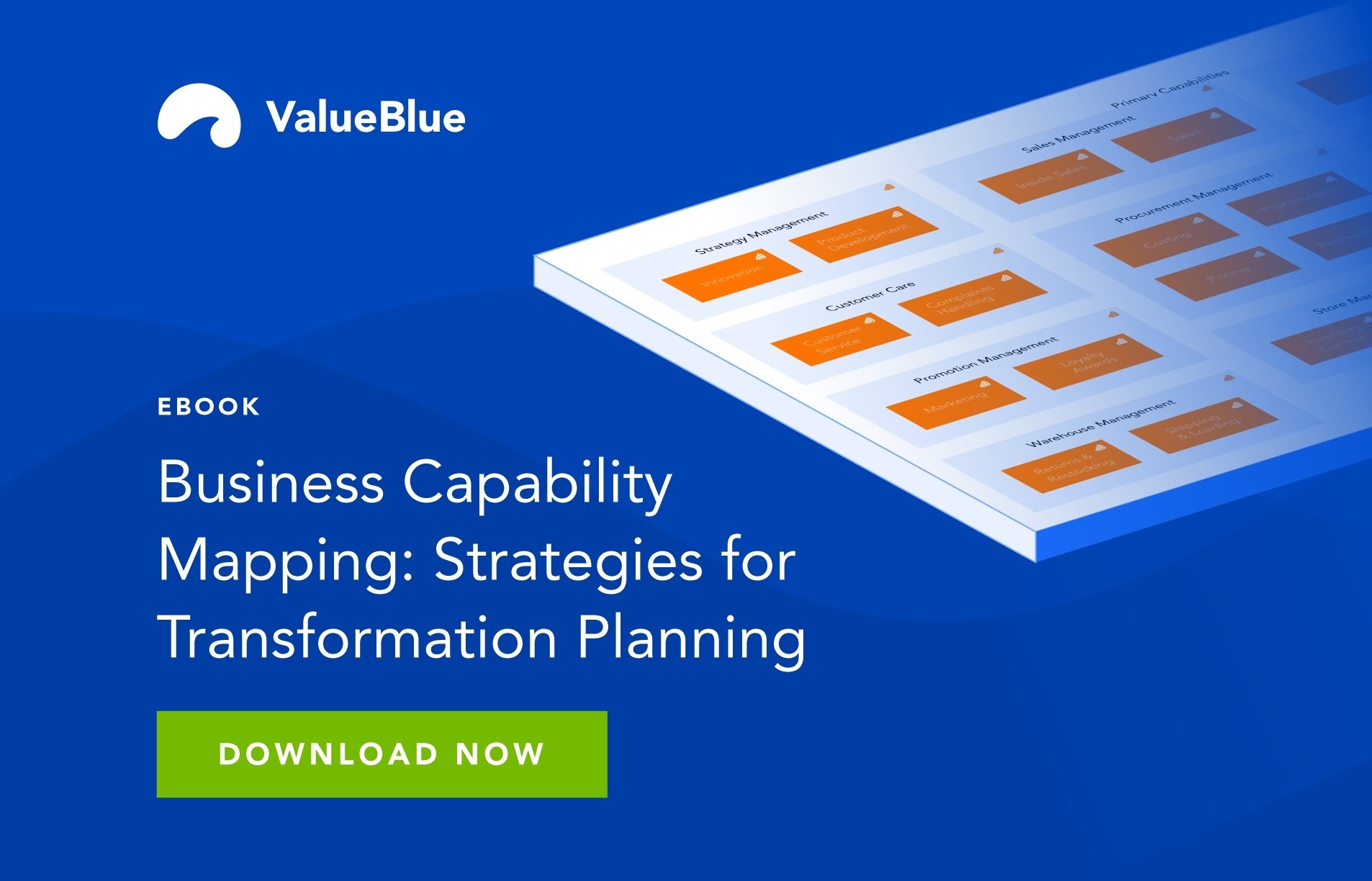KB - What is the Zachman framework?
The Zachman framework for Enterprise Architecture was created by John Zachman in 1987. The framework has since been expanded or updated multiple times by different authors. The basic framework however provides a simple and straight forward classification scheme for any architecture and is often used for describing enterprises, due to its simplicity. According to John Zachman, his framework allows you to create organizations or transform businesses over time. The architecture of an enterprise comprises a set of things or models, and these models, if retained and maintained, then also serve as a baseline for managing change. People therefore use the Zachman framework as a tool to communicate about (and solve) complex issues that often occur when engineering enterprises.

How to use the Zachman framework?
It is important to note that the Zachman framework is not a methodology, but rather serves as a classification scheme or meta-model that allows you to focus on specific, individual parts or aspects of an enterprises architecture without losing sight of the context. It is set up like a matrix and contains 36 unique cells that can be used to describe any architecture or to manage change according to two dimensions.
The first dimension covers the fundamental questions of communicating about the architecture which are posed in the columns of the framework:
- What? What information, business data and objects are involved?
- How? How does it work? (process flows)
- Where? Where are the components located? (network models/distribution networks)
- Who? Who are involved? (workflow models or responsibility assignments)
- When? When do things happen? (timing cycles)
- Why? What is the motivation? (business drivers, motivation intensions)
The second dimension covers the rows of the matrix and considers the different perspectives or viewpoints of the stakeholders involved in defining or transforming the architecture. Each of these viewpoints thus corresponds to different stakeholders, as can be seen in the matrix. The viewpoints are:
- The Scope (the context, from the perspective of the executive or planner)
- The Business viewpoint (the concept, from the perspective of the business manager or CEO)
- The System viewpoint (also contains the physical aspect, from the perspective of the architect or designer)
- The Technology viewpoint (from the perspective of the enterprise engineer)
- The Detailed representations viewpoint (from the perspective of the business technicians)
- The running/functional Enterprise viewpoint (from the perspective of the user)
Although the columns in the matrix have no order, the rows describe unique perspectives of, for example, business groups and in practice are often ordered accordingly. Filling each of the cells according to these questions thus allows you to pay attention to detailed aspects of an enterprises architecture without losing sight of their shared context.
Alternative frameworks
While the Zachman framework is well-known and often considered to be the standard for classifying artifacts, several other enterprise architecture frameworks exist. Examples of these are TOGAF, and E2AF. These can be combined with the Zachman framework or used independently
 Agile eBook
Agile eBook
When digital transformation hurts: Turning complexity into an agile organization
.png)

